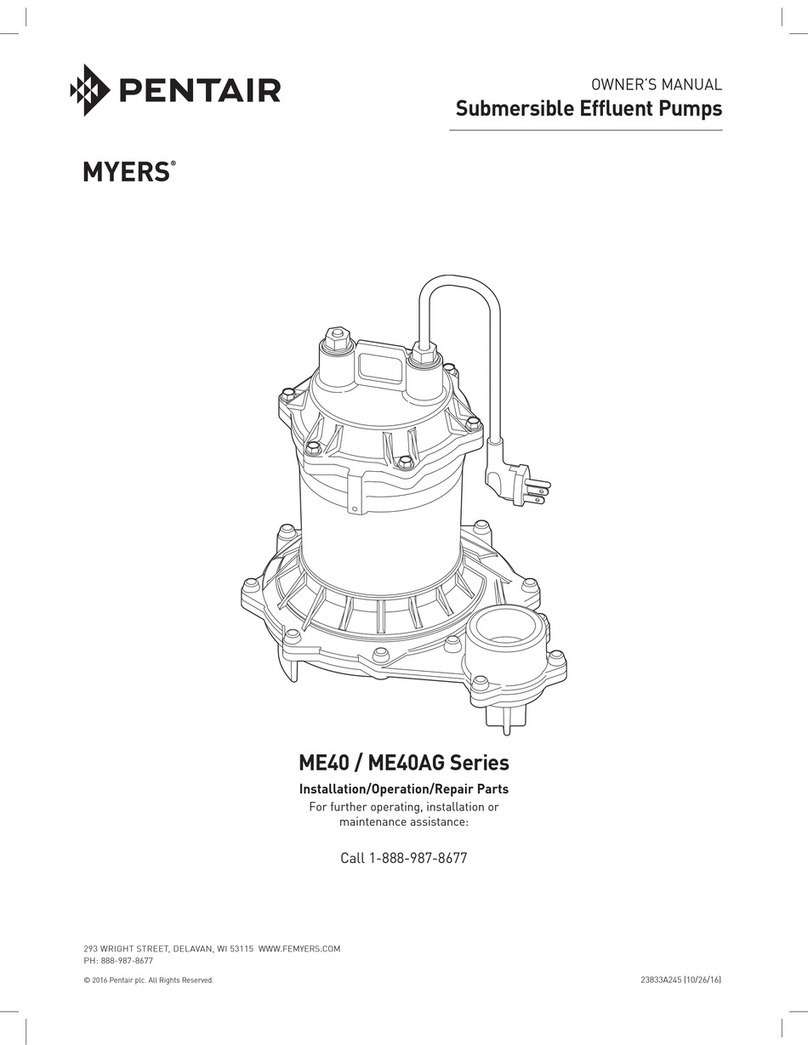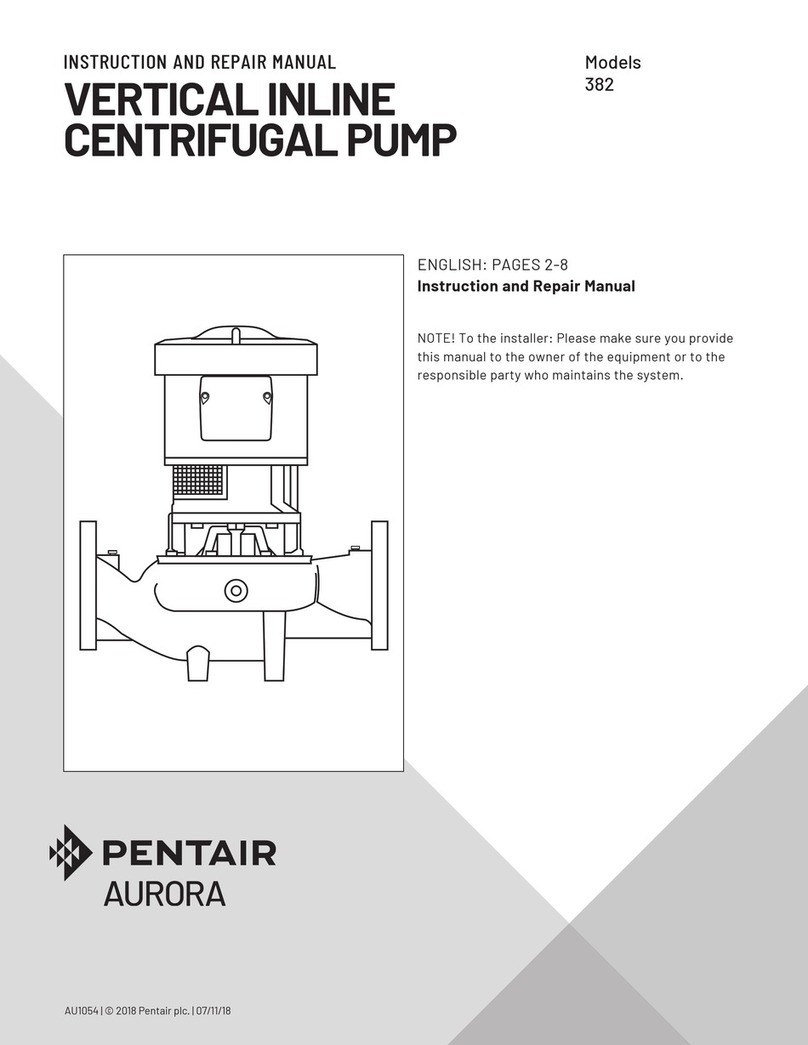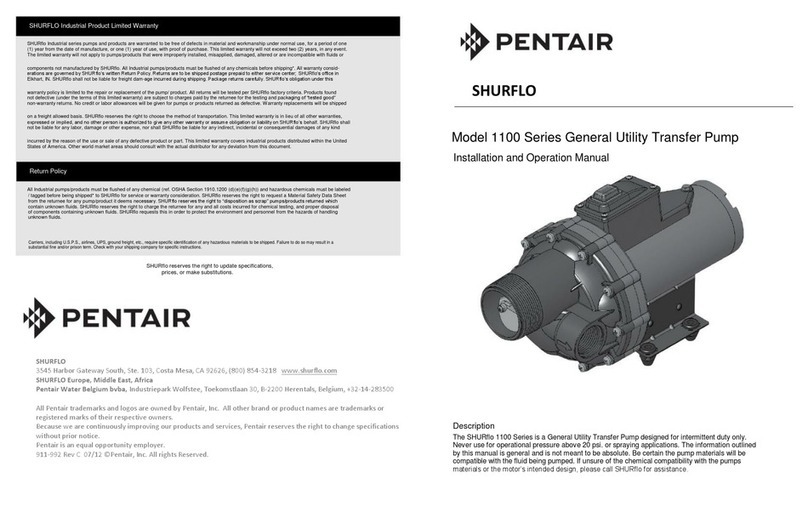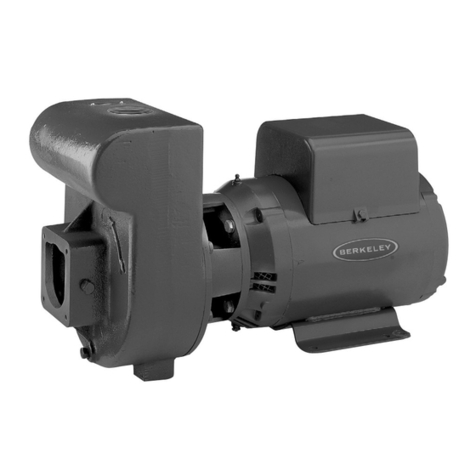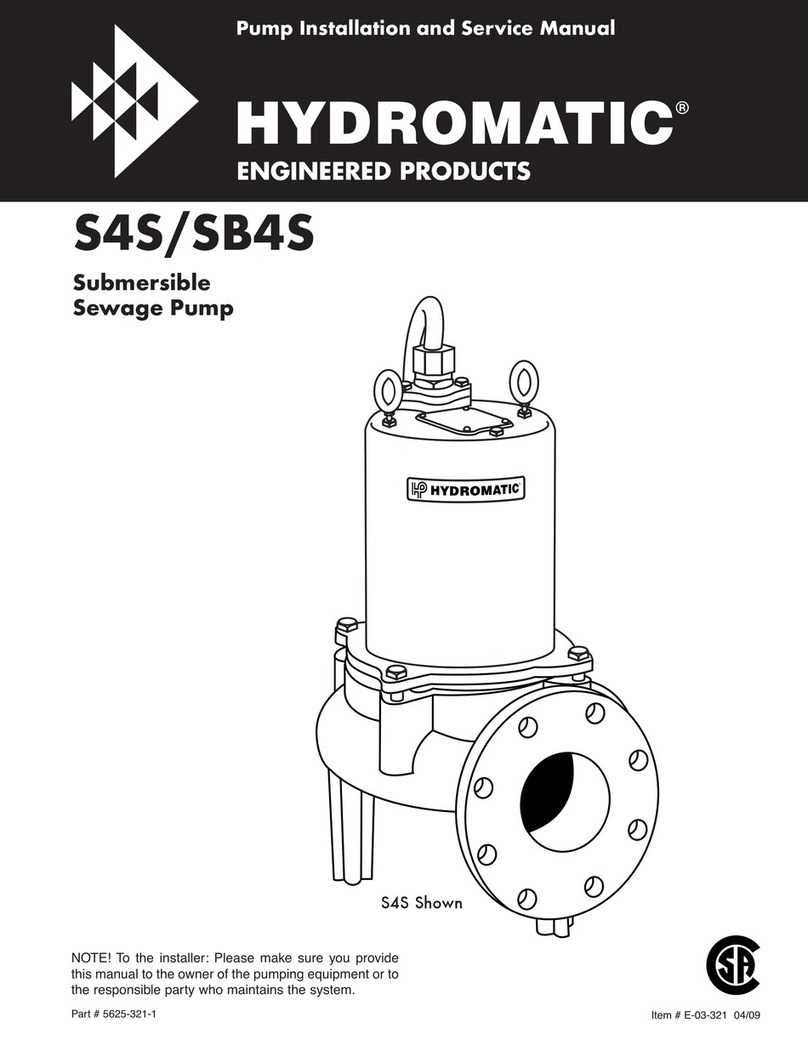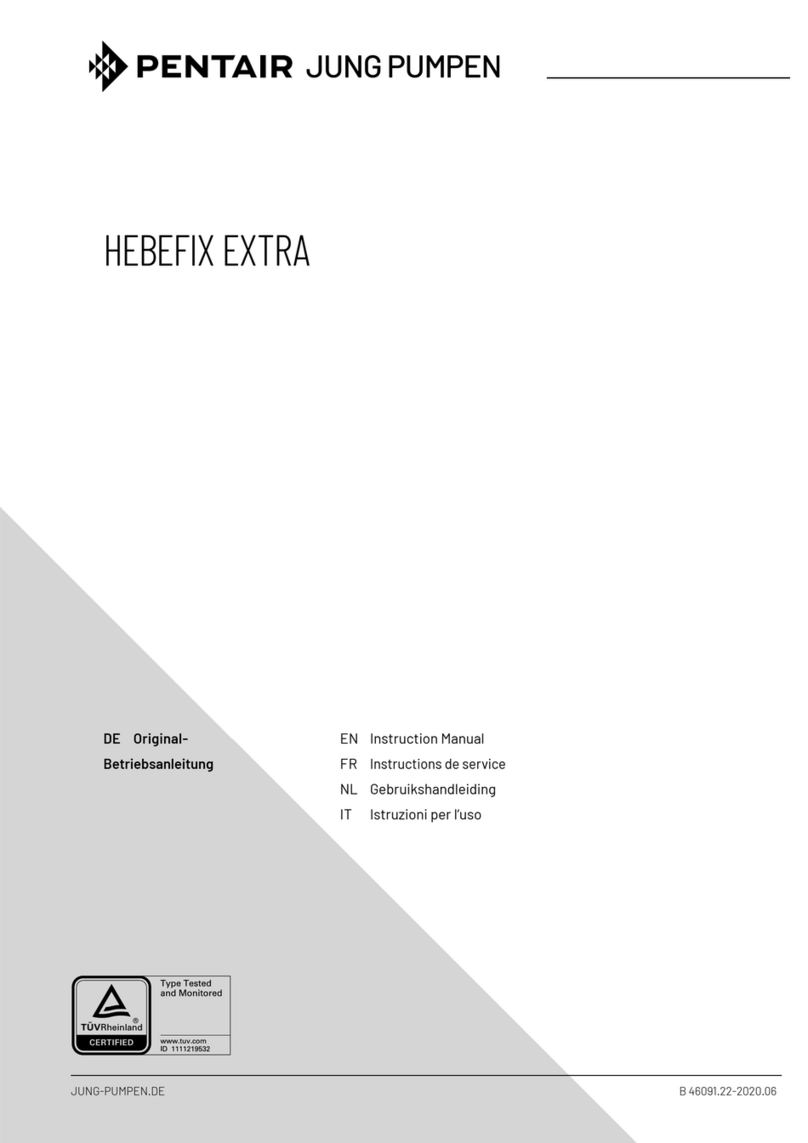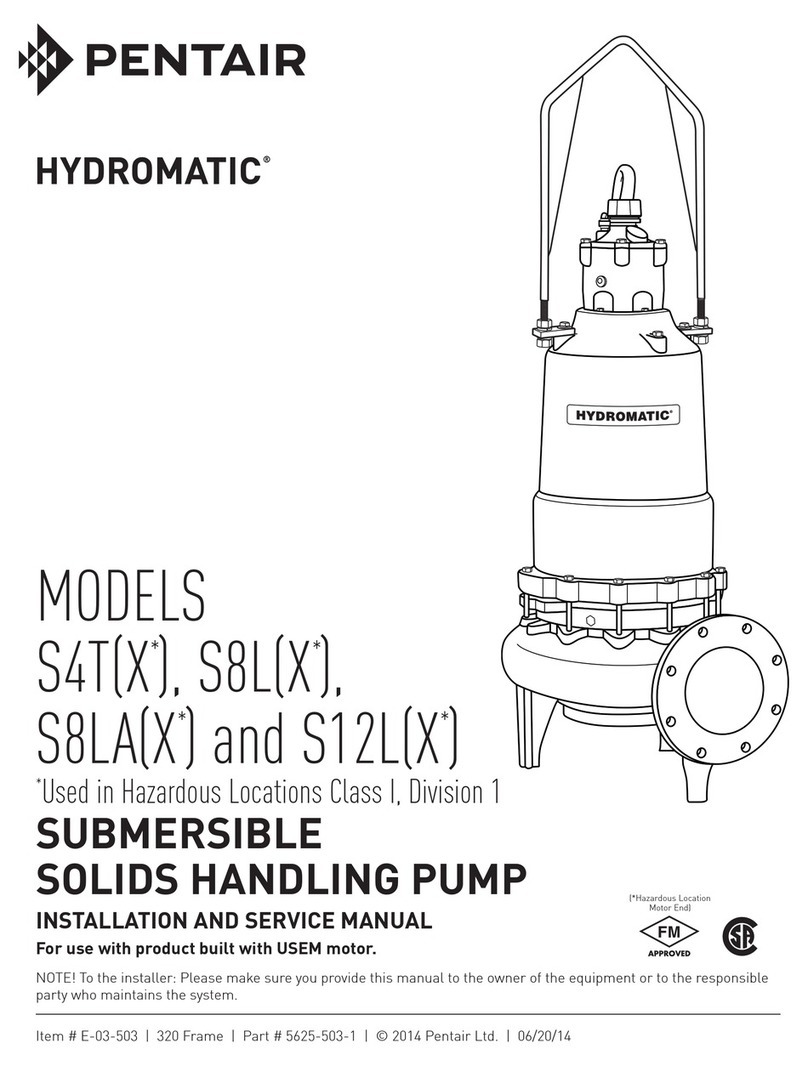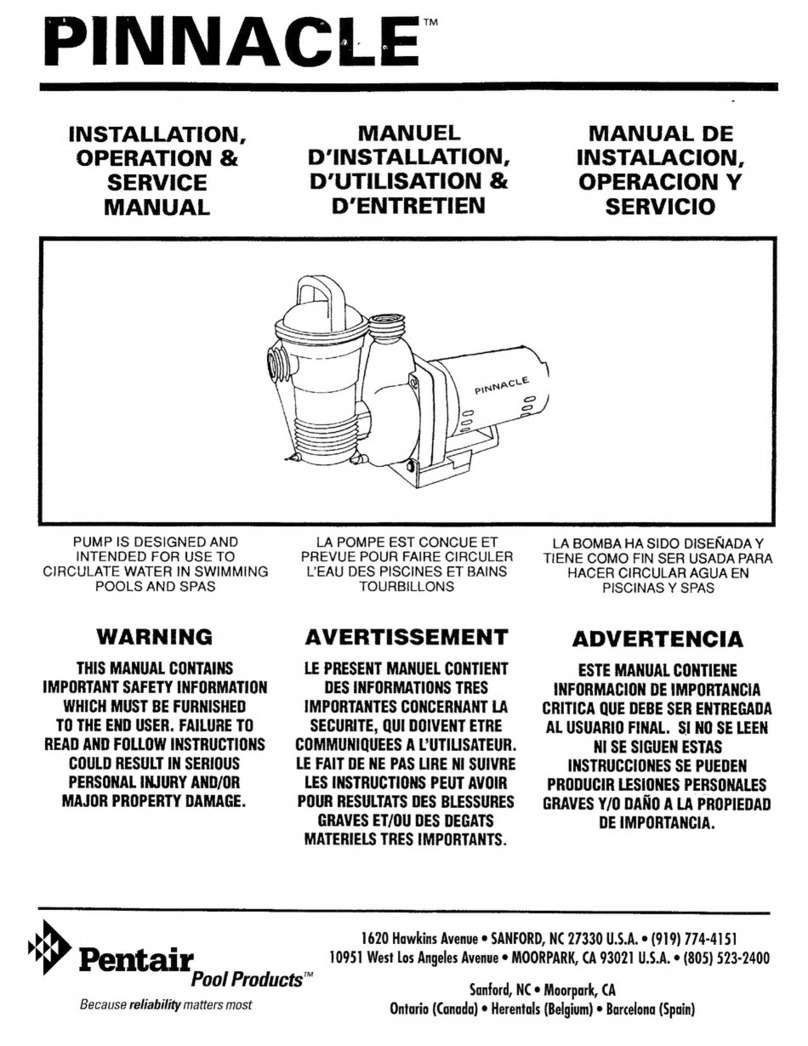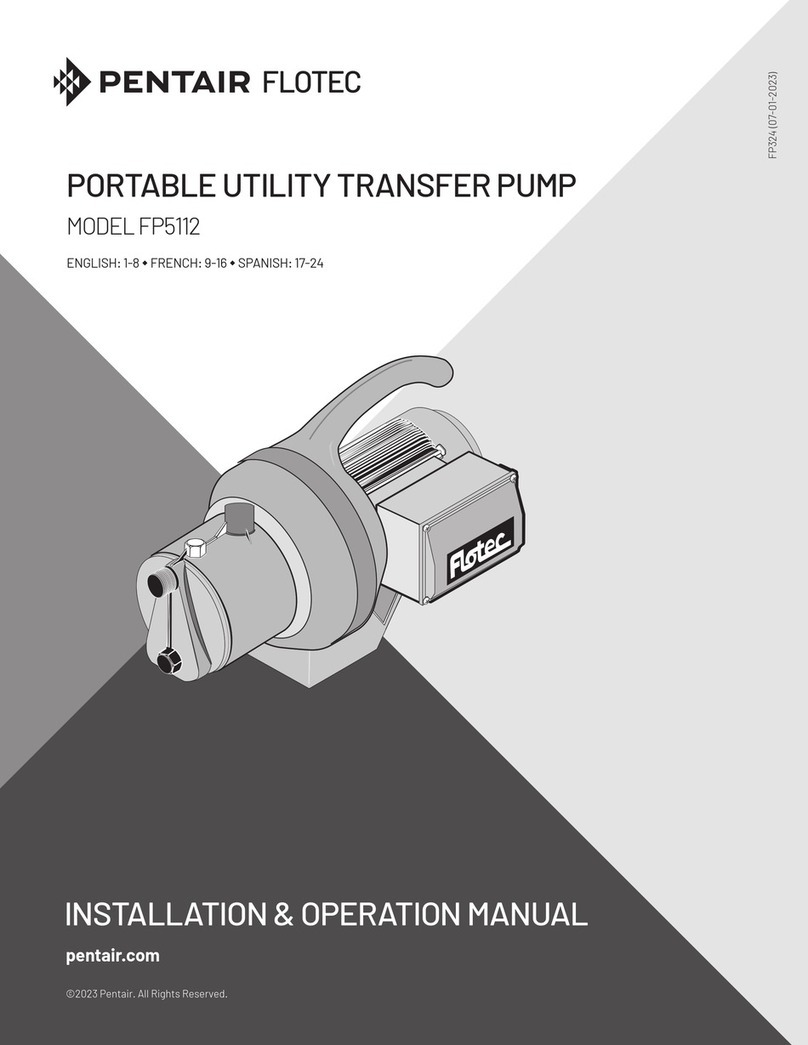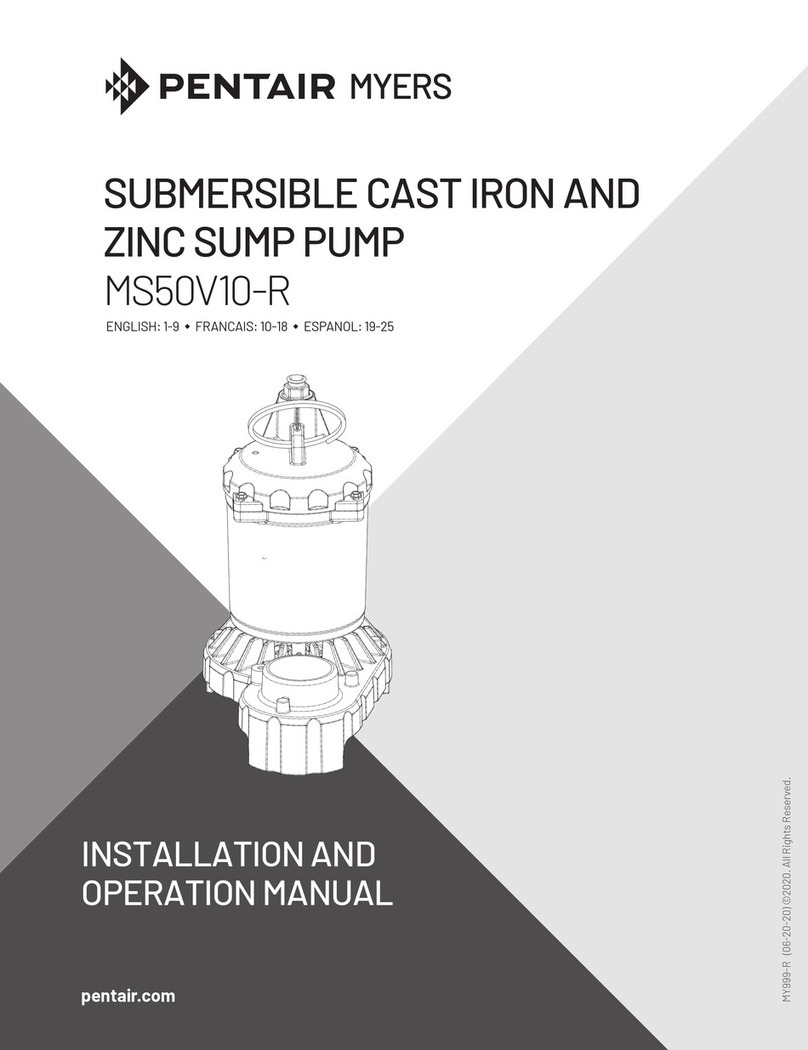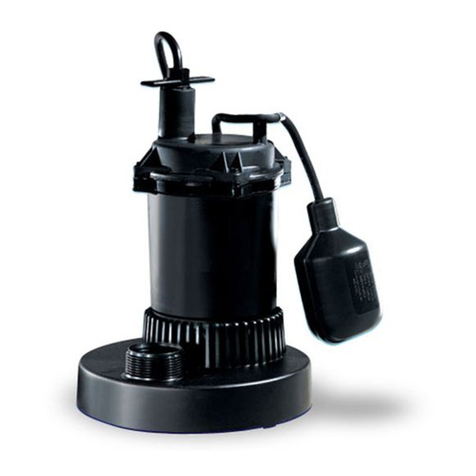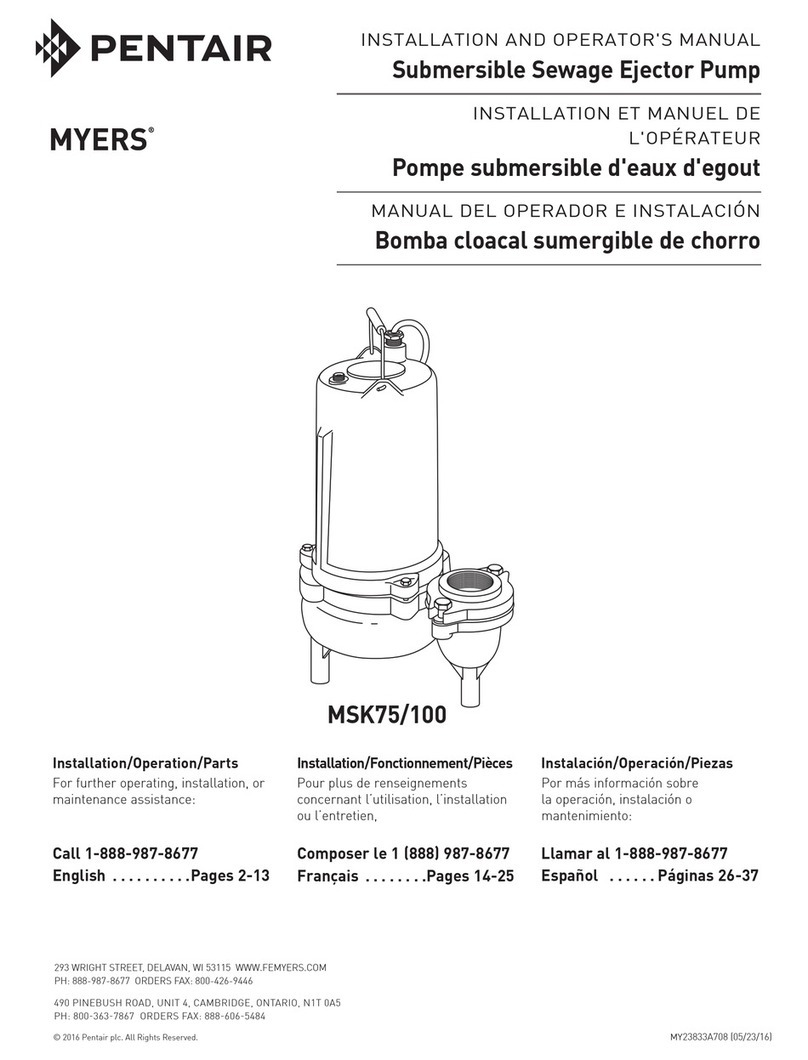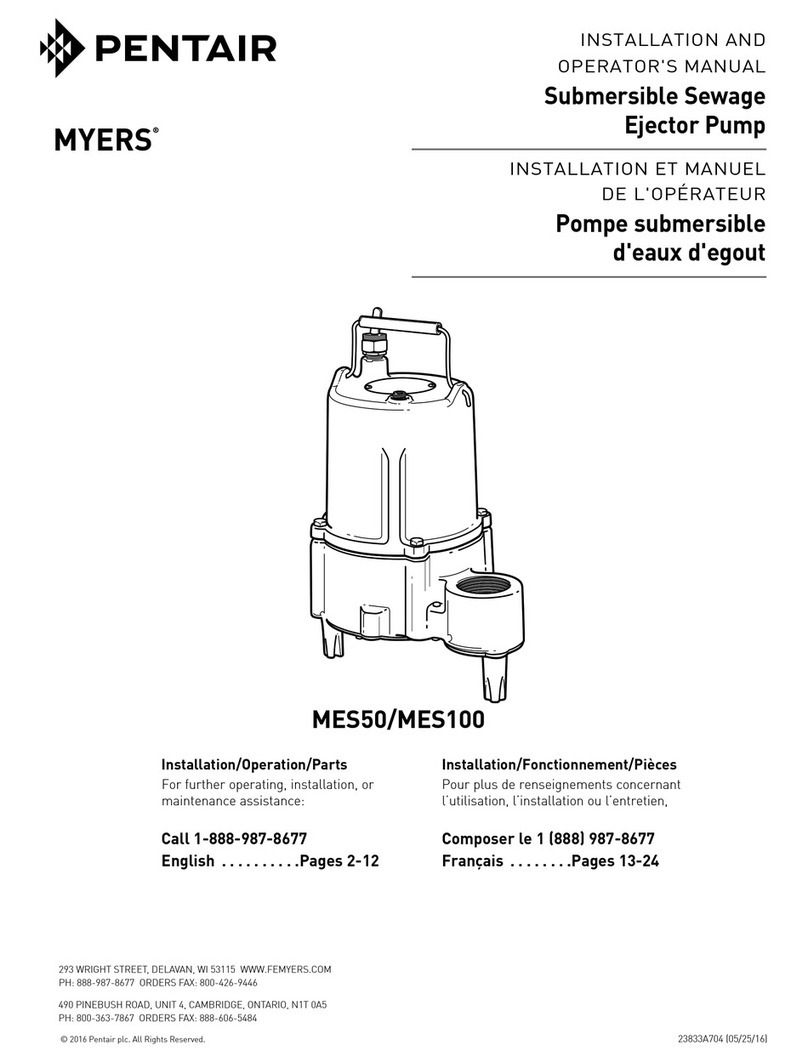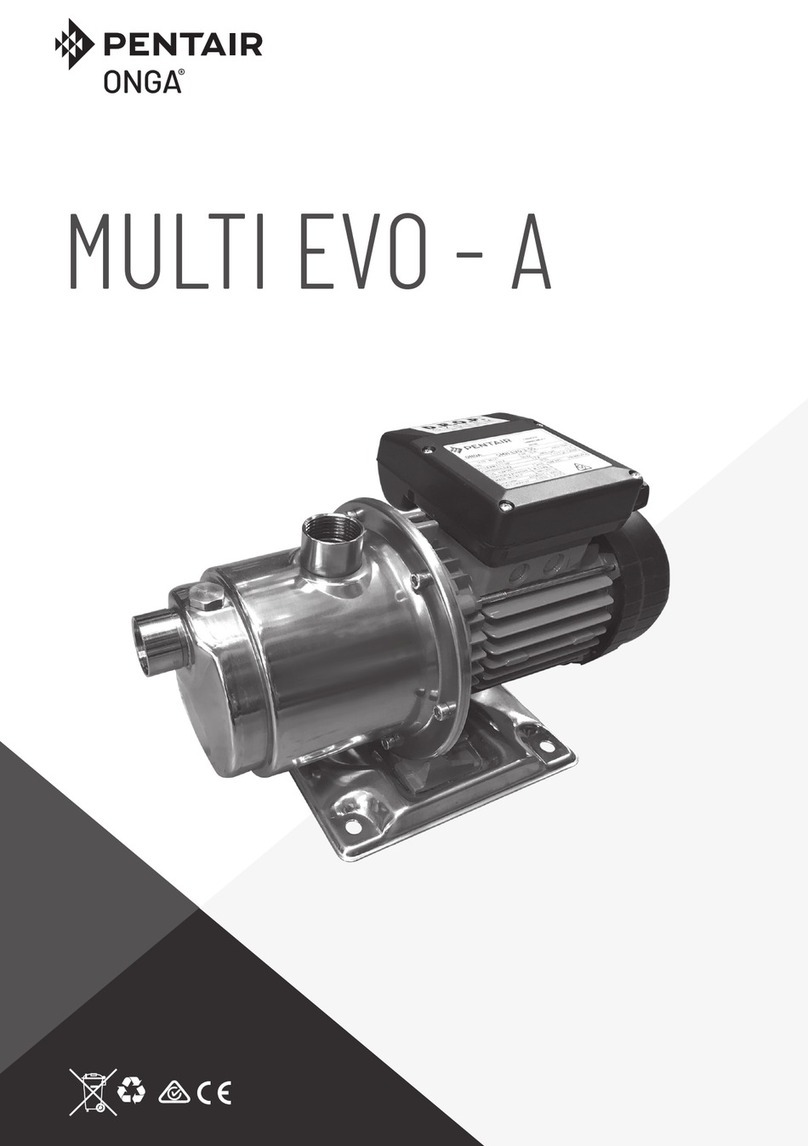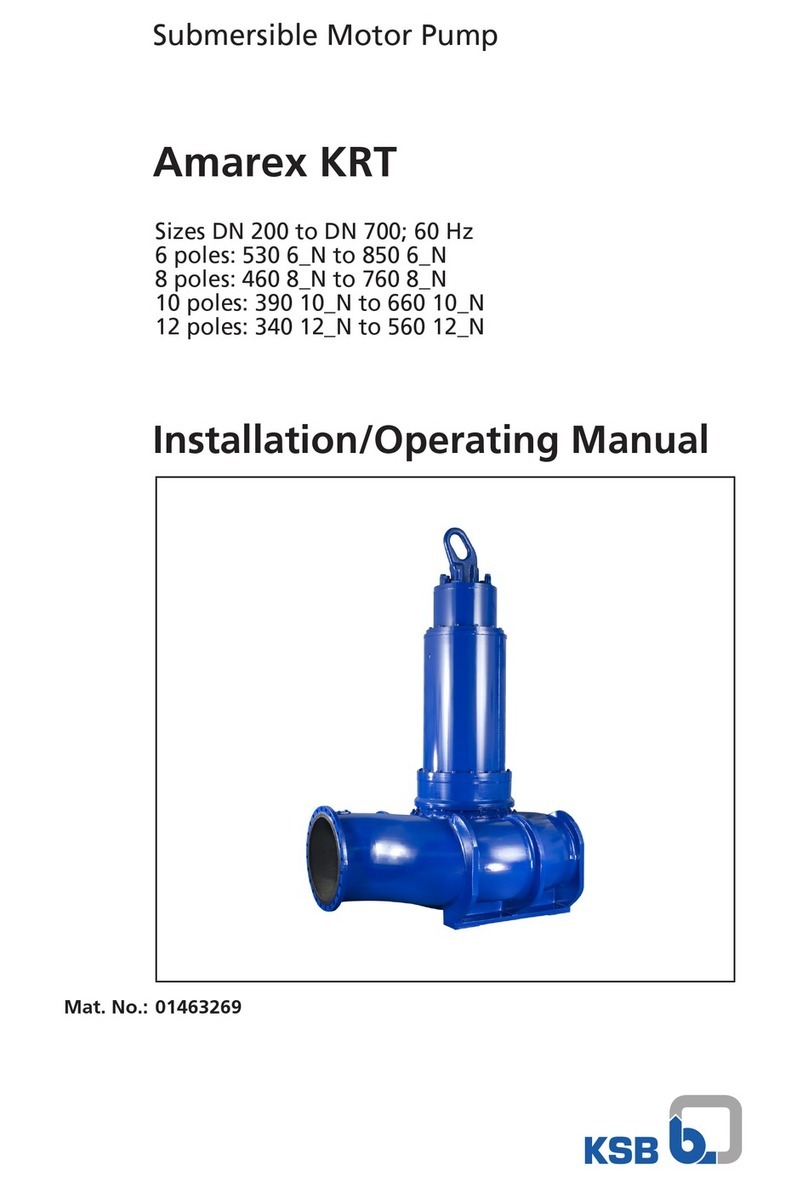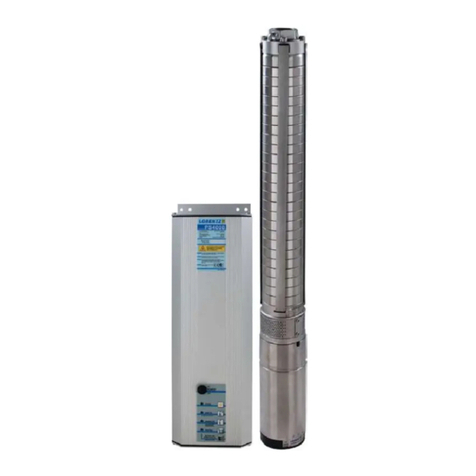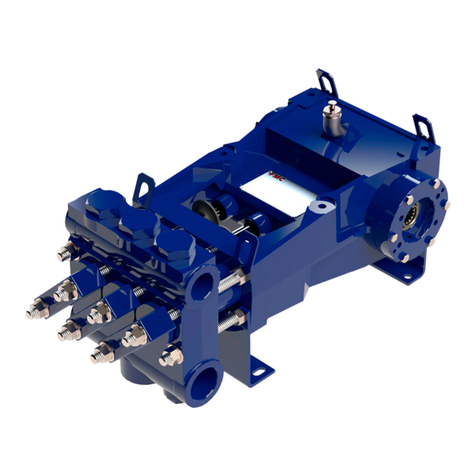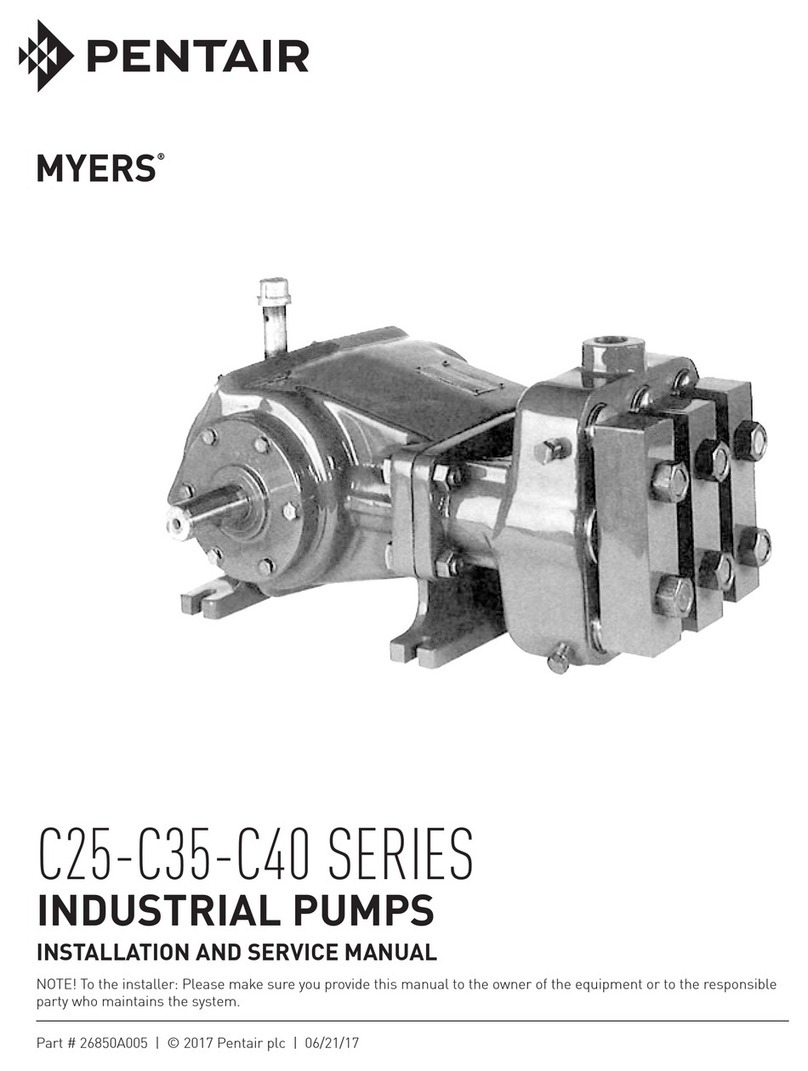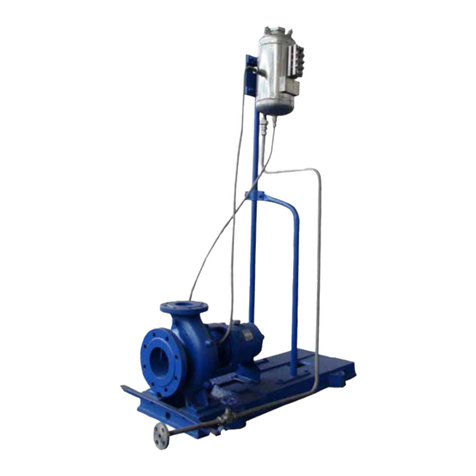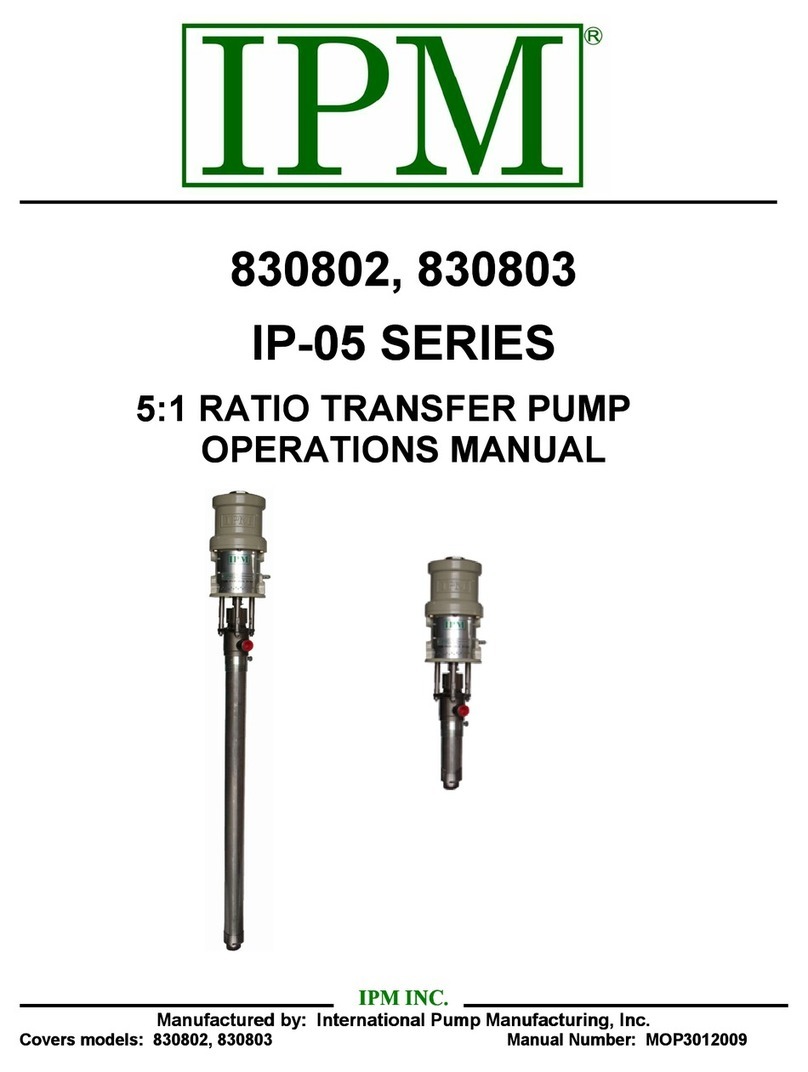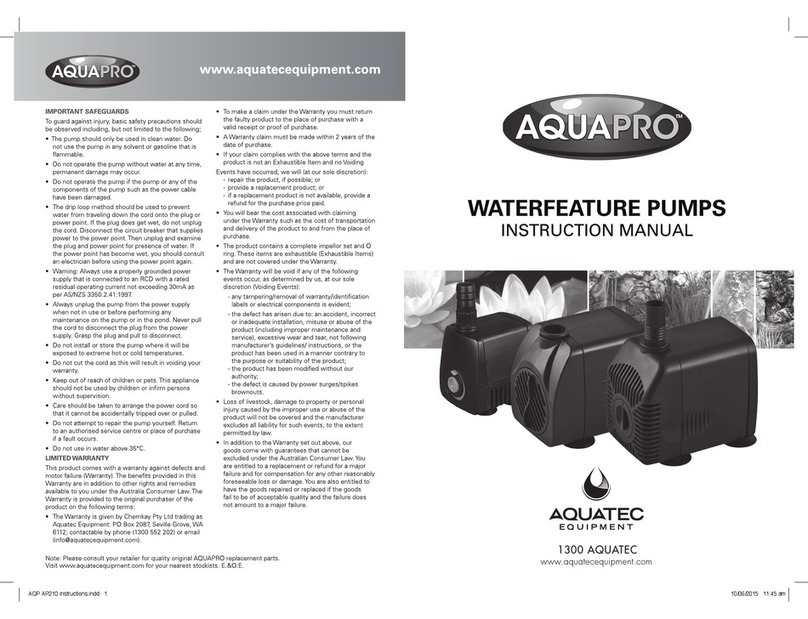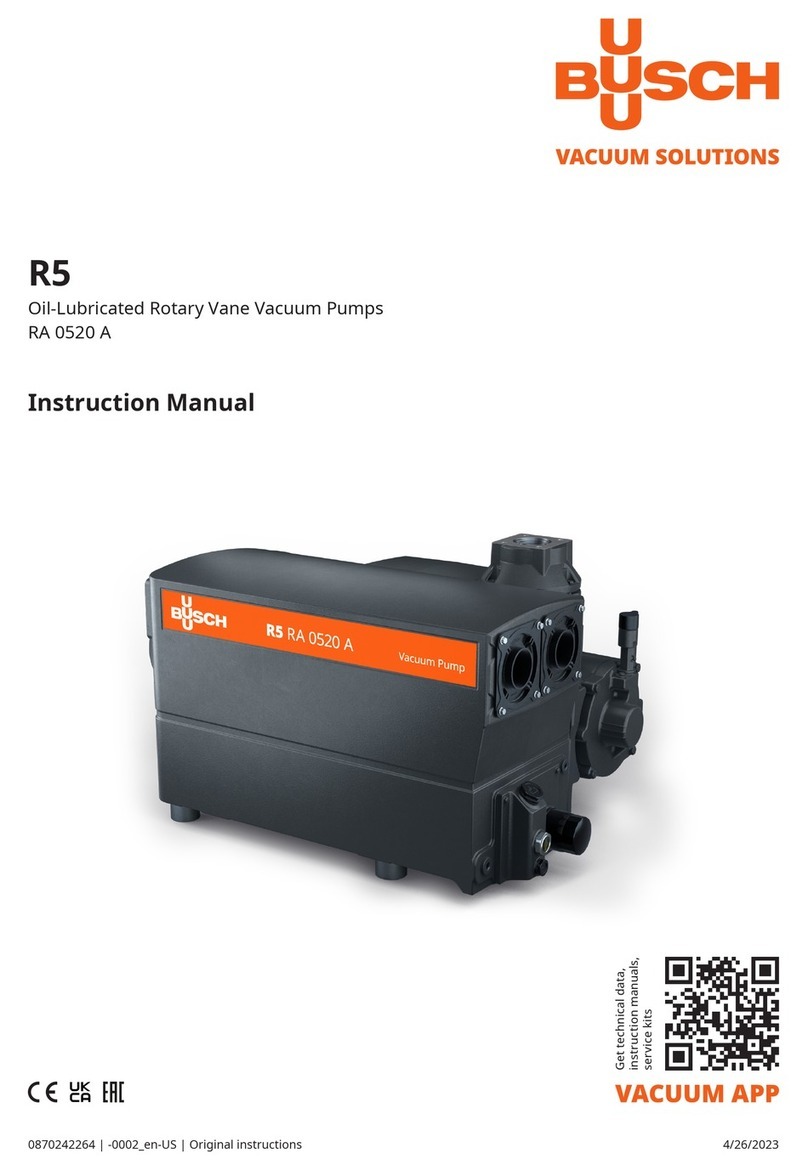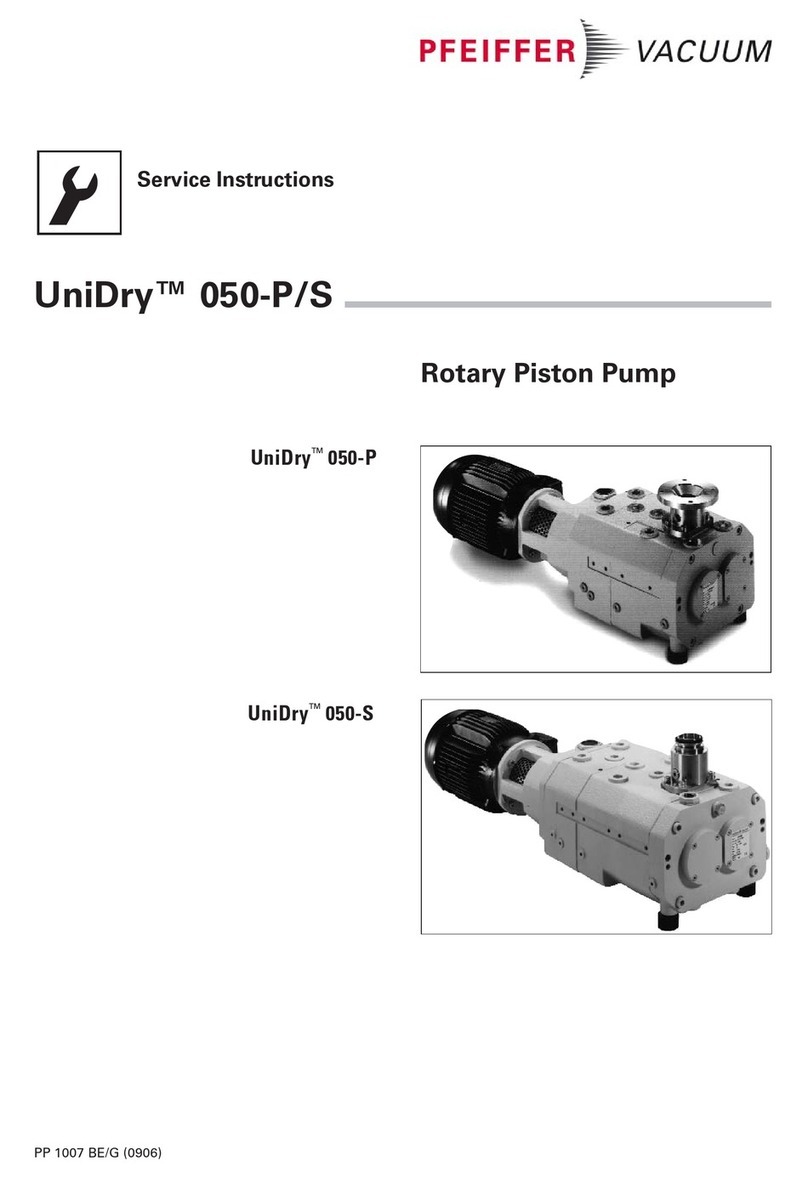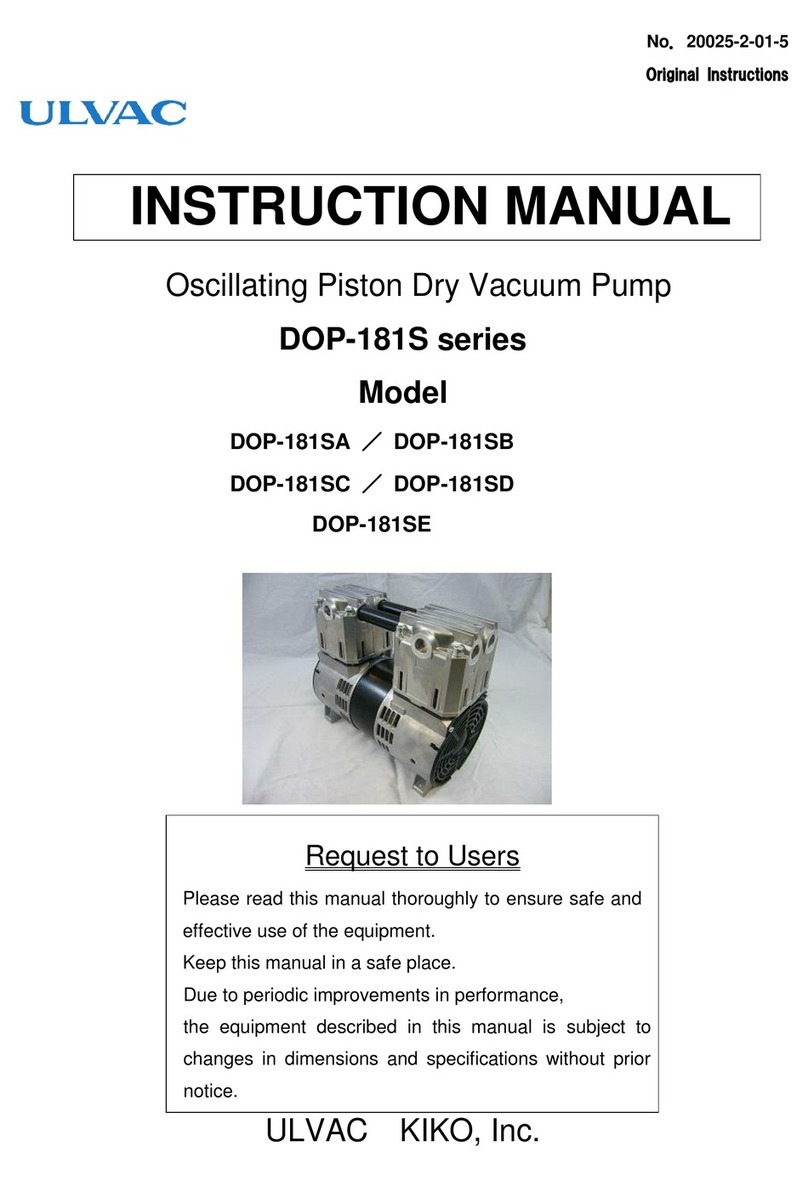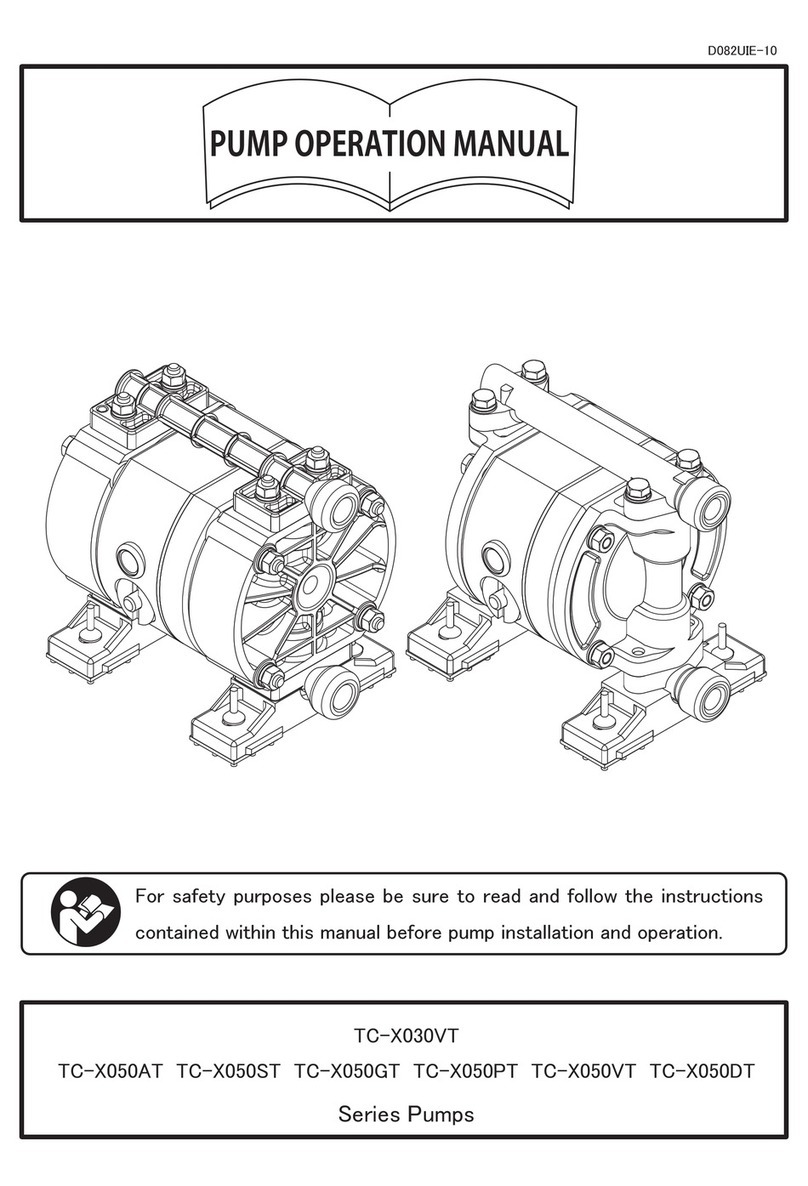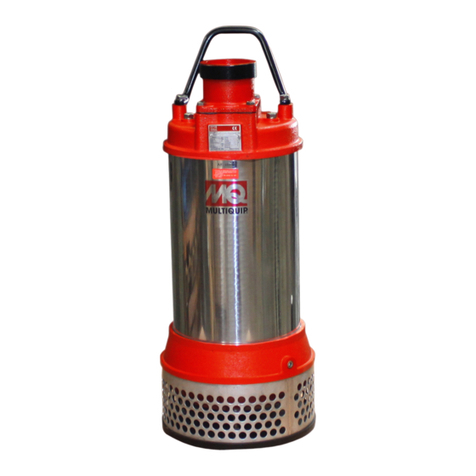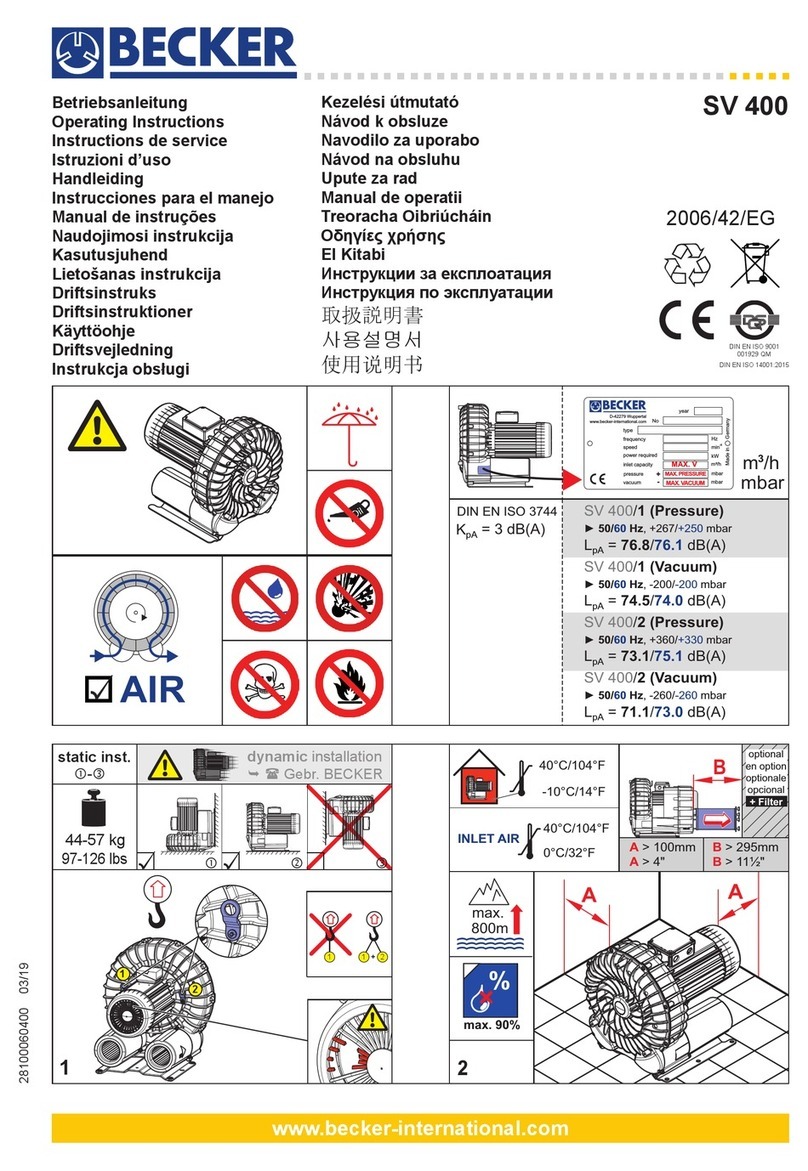
WARNING
BLACK
COIL
ON-OFF
SWITCH
L1 THERMOSTATS
IN SERIES
WHITE
L2
TWO WIRE CONTROL OFFERING AUTOMATIC RESET
THERMOSTATS
IN SERIES
WHITE
L2
BLACK
THREE WIRE CONTROL OFFERING AUTOMATIC RESET
L1
COIL OL OLSTART
IN CERTAIN APPLICATIONS THE NEC MAY REQUIRE THREE OVERLOAD RELAYS
WARRANTY IS VOID IF HEAT SENSORS ARE NOT
CONNECTED AS SHOWN (IN SERIES WITH CONTACTOR OIL)
notice operation. If pump is
noisy and vibrates, rotation
is wrong. To change rotation
interchange any two line
leads to motor on 3ø only.
DO NOT INTERCHANGE
MAIN INCOMING LINES. If
duplex system, check second
pump in the same manner.
4. Now set both H-O-A switches
to Auto position and allow
water to rise in sump until one
pump starts. Allow pump to
operate until the level drops to
turn-off point.
5. Allow sump level to rise to
start other pump. Notice run
lights on panel; pumps should
alternate on each successive
cycle of operation.
6. Turn both H-O-A switches
to Off position and allow sump
to fill to the override control
level.
7. Turn both switches to Auto
position and both pumps should
start and operate together until
level drops to turn-off point.
8. Repeat this operation cycle
several times before leaving
job.
9. Check voltage when pumps
are operating and check the
amp draw of each pump.
Check amps on each wire
as sometimes a high leg
will exist. One leg can be
somewhat higher, 5 to 10%,
without causing trouble. For
excessive amp draw on one
leg, the power company should
be consulted.
Phase Converters:
Phase converters are generally
not recommended, but in cases
where only single phase current is
available phase converter can be
used. Be sure to size the phase
converter large enough for the
amp draw specified on the motor
nameplate, not necessarily by motor
horsepower. The warranty on all
three phase submersible motors is
void if operated with single phase
power through a phase converter
and 3 leg ambient compensated
extra-quick trip overload protectors
are not used.
Pump
Maintenance
NOTE: Any unauthorized field
repair voids the warranty, the
hazardous location rating, and
Factory Mutual approval.
If the heat sensor and seal failure
are hooked up properly, no
attention is necessary as long
as the seal failure indicator
light doesn’t come on. To ensure
continuity of the seal sensor
leads, a test light is provided on
intrinsically safe Hydromatic
panels as standard equipment.
Pump should be checked every
quarter for corrosion and wear.
Maintenance:
As the motors are oil filled, no
lubrication or other maintenance is
required.
If the pump is used on a rail
system, it should be lifted once
every six months and checked for
corrosion and wear.
Generally these pumps give very
reliable service and can be expected
to operate for years on normal
sewage pumping without failure.
Lightning:
In some areas where considerable
lightning occurs, it is recommended
that a lightning arrestor be installed
at the control panel.
Lightning arrestors are good
insurance against damage to an
expensive motor.
Field Service on Motor:
All submersible motors out of
warranty can be serviced in
5
the field by any reliable motor
service shop. Any pump, in
warranty, must be returned to the
factory for service or repaired
at an authorized Hydromatic
service center. Charges will not be
allowed if in warranty pump is not
taken to an authorized Hydromatic
service center.
When field service is performed on
a pump, these instructions should be
carefully followed.
Field Service on Hydromatic
Hazardous Location Pumps:
If a Hydromatic hazardous location
pump is used in a hazardous location,
or if the pump is still in warran-
ty, the pump must be returned to
the factory for service or repaired
at an authorized Factory Mutual
Hydromatic service center. Charges
will not be allowed if in warranty
pump is not taken to an authorized
Factory Mutual Hydromatic service
center. This will ensure the integrity
of the hazardous location rating
of the pump and comply with our
warranty requirements.
Replacing Stator:
1. If stator only is damaged,
it may not be necessary to
completely dismantle pump as
stator and housing can be lifted
from pump without disturbing
seals or bearings.
2. Drain all oil from upper
housing, remove drain plug in
bottom of stator housing and
remove plug in top of housing
to allow air to enter.
3. After chamber is drained,
remove hold-down bolts and
lift off. Use care in lifting
as the seal failure connecting


















